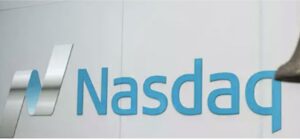The leading AI chip designer Nvidia stole market headlines this week with a record daily jump in market capitalization of USD277bn on Thursday as its’ stock rose 16% after it released blowout results and provided upbeat expectations. The news drove a turn higher in stock markets with both EuroStoxx50 and S&P500 hitting new record highs. More signs of a manufacturing recovery in the US added support to the market. Metal prices moved up over the week helped by a surprise 25bp cut in the Chinese benchmark for mortgage rates. Even Chinese stocks had a strong week after a very turbulent start to the year that was exacerbated by the ‘quant quake’ where forced selling by leveraged quant funds triggered a sharp decline. A hedge fund manager described it as the industry’s biggest black swan moment.
Minutes from the latest central bank meetings in both the Fed and the ECB confirmed that policy makers still believe it is too soon to cut rates. This week we pushed out our expectation of the first cut from the Fed from March to May (see Reading the Markets USD – We now see the first Fed cut in May, 20 February) while we still see the first cut from the ECB in June. Bond yields had a slight tilt higher again this week on the back of robust risk sentiment and the still cautious signals by the central banks. The market prices close to four cuts from the ECB this year, which is still a bit more than the three we look for but much less than the six cuts that were seen early this year. The market now sees around three cuts by the Fed this year in line with our expectations. In FX markets, EUR/USD regained some ground after the decline in January and early February. Improving sentiment in China has given some support to the cross. We still see the US economy as the strongest economy, though, and look for EUR/USD to head lower in the medium term.
Economic data this week was a mixed. Euro area PMIs showed a return to a two-speed recovery with service PMI rising from 48.4 in January to 50.0 in February while PMI manufacturing dropped back to 46.1 from 46.6 breaking the rising trend of the past three months. Service employment also picked up. We still expect the manufacturing sector to see gradual improvement over the coming quarters driven by a turn in the global manufacturing cycle. With services also improving we look for a slight lift in GDP growth in Q1. The US showed the opposite split with soft service PMI but PMI in manufacturing moving higher. The latter is in line with the latest increase in ISM manufacturing and fits with the positive signals we have seen out of Asia over the past quarters. The weekly US jobless claims were strong, falling to 201k from 213k which is a very low level pointing to a continued robust labour market.
Over the coming week focus will again be on manufacturing with the US and China releasing ISM and PMI manufacturing, respectively. Inflation is also in the spotlight with Euro Flash CPI for February and Japanese CPI and US PCE inflation for January. We expect the Euro CPI to still be well behaved measured on monthly momentum in the core CPI, which the ECB is watching closely. We also get unemployment data for the euro area, which is still at record low levels at 6.4% despite the economic slowdown.
Full report in PDF.









